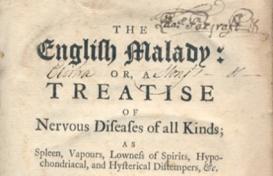What were the processes that led medical writers to create the category of hysteria in the eighteenth century and thereby to define an area of competence specific to medical knowledge? How did they appropriate a topic of study, enlisting literary tools and philosophical references in their quest for authority? Such questions were key to Sabine Arnaud’s research on the construction of hysteria as a medical category in France and England in the period 1670–1820. In her monograph, she showed how theorizations of the malady operated as a series of grafts, giving hysteria a hybrid character in a body of texts on imagination, sexuality, and generation. Created in order to gather together physiological phenomena that ranged from convulsion to catalepsy, the category arose in a field saturated with enunciative acts; the naming of convulsive illnesses, women’s illnesses, and nervous illnesses proliferated. It was within this sedimentation of conceptions and their diverse and contradictory associations that hysteria was constructed. Rather than recapitulating a series of interpretations, Sabine Arnaud’s study asked how the operation of knowledge configured itself in relation to preexisting constructions of hysteric, uterine, or vaporous pathologies. Both the process of selecting a term and the accompanying theorization were far removed from a progressive selection or exclusion of the causes that provoked the pathology. How, then, did hysteria develop into a singular category? What was the uneven and frequently backtracking movement of its theorization toward assimilation into a single term?

George Cheyne: The English Malady; or, Treatise of Nervous
Diseases of all Kinds. London: G. Strahan, 1734
Project
(2010-2013)
